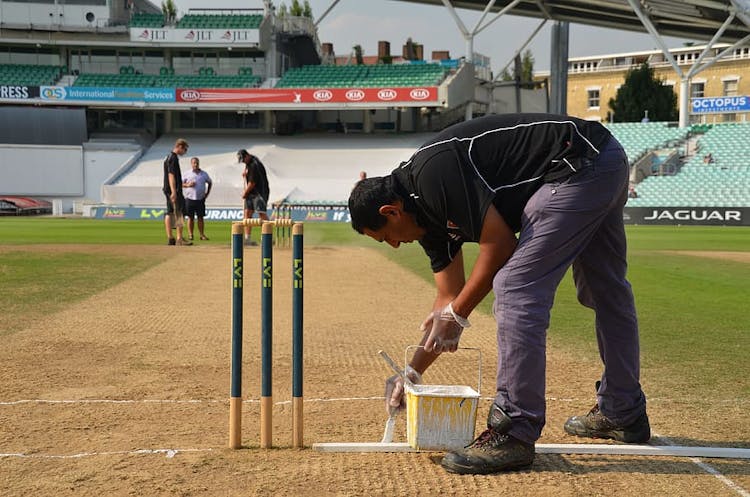Why T20 format is good for cricket?
The T20 format, like Indian Premier League and SA20, have undoubtedly altered our perception of cricket. While the constitution of teams in T20 cricket and the IPL is radically different from anything previously known, the most significant shift has occurred in how games are played and sport is measured.

Explore This Page
The advent of T20 leagues such as the Indian Premier League (IPL) and the Big Bash League (BBL) always spelt a sort of doom for international cricket, but nothing accelerated it as much as the SA20, South Africa’s franchise T20 competition.
Launched in 2023, the SA20 was a roaring success for the crumbling South African cricket board with their revenues plummeting, so much so that it gave the competition first rights to their major players even when there were clashes on the international calendar.
This has now led to South Africa sending a ‘C team’ on their Test tour to New Zealand with a new captain who is yet to make his international debut. The fiasco has seen comments flooding on social media with critics and fans lashing CSA (Cricket South Africa) for their decision in prioritising a T20 competition - called as SA20 - over the traditional, sacred Test cricket.
It was put to bed quickly when Shukri Conrad, the Test coach, said the following impactful words: “If it [SA20] doesn't happen, we are not going to have Test cricket anyway.”
The plight of Cricket South Africa is not new in international cricket. Most boards outside BCCI, Cricket Australia and England Cricket Board, labelled the ‘Big Three’, face financial crunch.
Cricket has undergone a revolutionary transformation with the advent of this format, an exhilarating rendition that has breathed a fresh wave of zeal into the game, rendering it more accessible and appealing to a global audience, something that wasn’t possible with an eight-hours-a-day-for-five-days format played during the day.
T20 cricket, often hailed as cricket's response to the fast-paced demands of the contemporary world, has evolved into a spectacle that offers something for everyone.
The T20 Phenomenon
A traditional cricket match, typically spanning several days, is now compacted into a few hours of high-octane entertainment. T20 cricket resembles a symphony, sweet, short and exciting.
This format has masterfully distilled the essence of cricket into a condensed, more vibrant version, ensuring that every ball bowled is crucial, and every powerful hit has the potential to be game-changing. The strategy and skills in the game, comparable to baseball, brought about a new dimension to cricket fans.
The several T20 leagues around the globe have not only captivated audiences with their glamour and glitz but have also significantly advanced the global reach of cricket.
The IPL, a cricketing carnival, brings together the world's premier players, creating a melting pot of cultures and playing styles.
It serves as a spectacle where cricketing legends and rookies share the dressing room, offering a unique blend of experience and youthful exuberance. Where else would you see a Virat Kohli share hours of wisdom with an uncapped 18-year-old in a dressing room?
Likewise, the BBL has reshaped the Australian summer, becoming a staple for cricket enthusiasts. The league's success is evident in its attendance figures, frequently surpassing those of traditional cricket formats. This is a testament to the format's adaptability and thriving nature across diverse cultural contexts.
Economic Implications
The economic ramifications of T20 cricket cannot be overstated. It has emerged as a financial lifeline for cricket boards like those of CSA, particularly during times of uncertainty.
The revenue generated through broadcasting rights, sponsorships, and merchandise sales plays a pivotal role in sustaining not only T20 leagues but also traditional cricket formats, as Conrad pointed out.
This influx of funds has empowered cricket boards to invest in grassroots development, infrastructure, and player welfare, ensuring the holistic growth of the sport.
T20 gives the audience what they want
T20 cricket aligns seamlessly with the fast-paced lifestyle of the modern audience, who ironically spend hours, watching less-than-one-minute reels. It offers a perfect escape for those seeking a quick, thrilling sporting experience.
The format's ability to draw crowds, both in stadiums and through television viewership, serves as a clear indicator of its mass appeal. It caters to a diverse audience, from purists who appreciate the game's nuances to casual viewers enticed by the format's excitement and brevity.
As we embrace the future, T20 cricket is inevitable for the global expansion of the game. Reaching a wider audience, especially if they are new to the sport, will be a lot harder with Test cricket.
T20 has not only revitalized cricket but has also challenged players to adapt and evolve.
The format demands a unique skill set, encouraging players to be more dynamic and versatile. This evolution extends beyond on-field tactics to encompass how the game is marketed and perceived on a global scale.
T20 cricket essentially transcends being merely a format - the complex blend of tactics, on-field dynamics and innovation in skill makes it a true spectacle, which is what sport is. The older variations of the sport perhaps failed to cater to the masses because of this: it didn’t essentially fit into the definition of sport.
T20 has successfully bridged the gap between tradition and modernity, offering a spectacle that resonates with both the young and old alike.
As we revel in the thrilling encounters and nail-biting finishes, let us acknowledge the transformative impact of T20 cricket on the sport's landscape. With the emerging likelihood of international cricket taking a backseat as franchise cricket blooms, let us not forget that this is still the sport we all love, just a bottled version, retaining the same essential flavours.

Manish Khorgade brings a wealth of knowledge in cricket and stats to the world of cricket betting. He was hooked on cricket as a 9-year-old back in 1992 during the ODI World Cup. Those iconic semi-finals watched along with his father left an indelible mark on him. He hasn't left cricket since. Or, more appropriately, it's the other way around.
About 13 years into the IT industry, he decided to shift base and follow cricket, wherever it might take him. Manish started with content writing for various publications. He, along with his friends, created GameOfStats - a statistics portal for fantasy sports enthusiasts - helping them create stats-based fantasy teams. He is currently a jack of all things and master of a few on this very portal - cricket-betting.com.
Being a stats expert, he spends time understanding the odds provided by the sportsbooks for various markets. He is astounded by how very little has been done when it comes to using cricket stats in predicting the outcome of an event. He aspires to change that.
Manish loves it when an underdog wins the game. He doesn’t have any favourite cricketers. Only the ones that inspire him more than others. He considers MS Dhoni to be the closest to a perfect sportsman - Brains, Brawn and Nerves. He also thinks Ben Stokes is a superstar and that Ravindra Jadeja should have some fielding drills named after him.
Manish wishes to visit major sports venues across the world. Until then he is busy talking, writing, analyzing, and debating all things cricket.
Expertise
- Cricket Stats Expert
- Cricket Researcher
- Cricket Podcaster
Publications
- Articles on SportsKeeda
- Cricket Blogs on Medium
- Podcast - CB Cricket Prediction
Connect with Manish Khorgade
Join our community

Overseas players are highly valuesd in the Indian Premier League. This article talks about and provides insights about the top 5 overseas players in the IPL who have provided the highest form of impact in the league.

The article highlights five of the biggest upsets in IPL history, where underdog teams like RCB, Kochi Tuskers Kerala, Pune Warriors, and Rising Pune Supergiants defeated stronger teams against the odds, including matches against Rajasthan Royals, Mumbai Indians, and CSK in various seasons.

This special episode critically analyzes the underwhelming performances of Indian superstars Virat Kohli, Rohit Sharma, and Hardik Pandya. It debates whether Kohli's play is self-centered and slow, costing RCB victories, and questions Mumbai Indians' leadership under Pandya. Experts Ed, John, Manish and Ben discuss potential recoveries and the real ambitions of these teams in the IPL.




